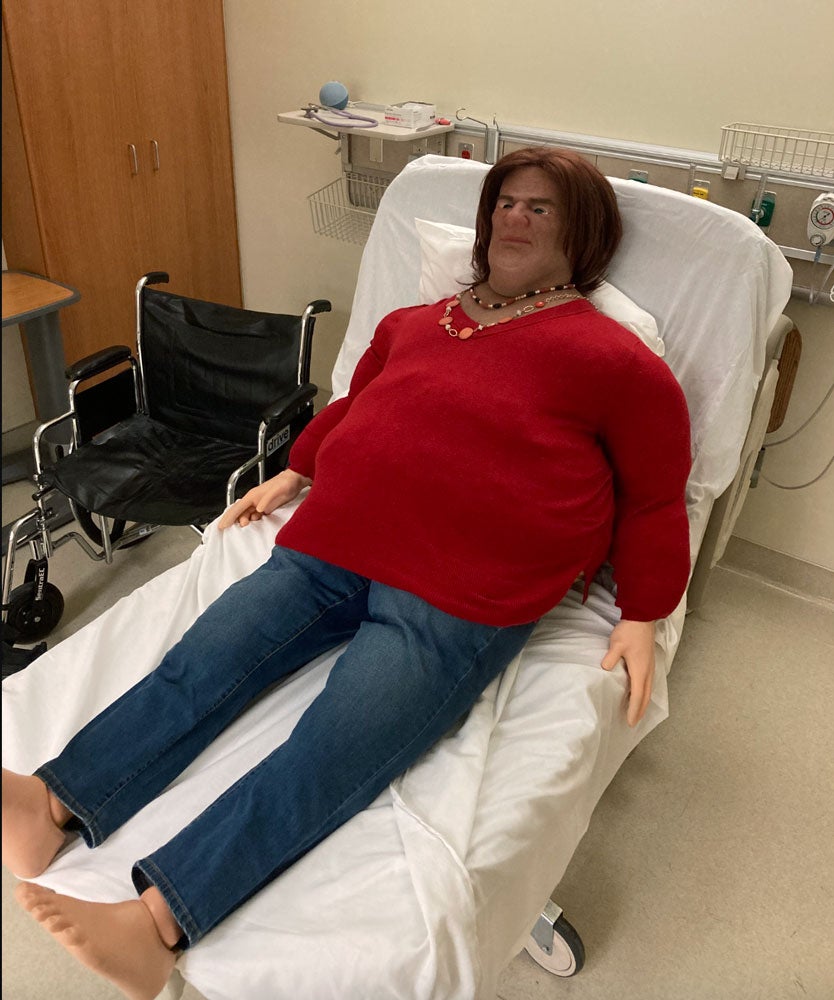School of Nursing associate professors Sarah Llewellyn and Kelley Connor, along with undergraduate research assistants John Henry Dye and Margaret Quatraro, recently co-authored an article on weight bias as studied through simulation.
For senior nursing students Dye and Quatraro, this is their first research publication.
“It is nice to know that peer reviewers saw our research as valuable and worthy of publication,” Dye said. “I never thought I would be published as an undergrad.”
Both Dye and Quatraro were involved in the entire life cycle of the research, from gathering background literature to data analysis to presenting their project at the 2022 Western Institute of Nursing conference.
“Working on this project has broadened my understanding of professional nursing and given me a solid start-to-finish research experience,” said Quatraro.
Dye believes having a publication to his name will increase his chances of getting a job when it comes time to interview for positions after graduation, but “more importantly, the research itself has given me insights into the discrimination people with obesity face in healthcare,” he said.
“It motivates me to shine a light on this bias in my own practice,” Dye said.John Henry Dye
The article was also featured in the online journal Obesity and Energetics Offerings.
Combatting bias with communication
Research shows that many healthcare providers (from doctors to nurses to students) have weight-based biases that can negatively affect patient care. As a result, patients tend to avoid treatment and mistrust their providers.
One way to increase patient trust, and therefore positively impact their care, is through effective communication. So the research team taught a patient-centered method of communication and designed a simulation in which students could apply it.
Using several data-driven surveys and a reflective questionnaire, the team then evaluated students’ biases both before and after the simulation to see the impact of the method.
Their results indicate that, with practice, future providers (in this case, nursing students) can increase the amount of positive patient outcomes by practicing patient-centered care, promoting respect and being flexible in their own thinking to understand a patient’s perspective.
Reality-based research
In order to design a weight bias simulation that reflected a real life interaction as accurately as possible, the research team talked to a real person. They put a call out on a body positivity Facebook group and “got a crazy amount of responses,” Quatraro said.
Quatraro interviewed a member of the group and asked her questions that weren’t just healthcare related; as part of the Patient Voice Project, the team wanted to understand her full story as a person with obesity.
Armed with a better understanding of a real patient’s experiences, the team created a simulated character and scenario around weight bias.

Weight-based bias in simulation
“Carly” now lives in the simulation center, and her story parallels the one the research team heard from a real patient. She’s a manikin with obesity who is very body positive and frustrated with care she’s received in the past. In the scenario, she has trouble breathing and the students are tasked with recommending a plan of care.
The study puts students in a position where they can utilize patient-centered communication and identify Carly has a lower respiratory infection, or they can forgo listening to Carly and recommend that she needs to lose weight.
The research team evaluated students’ actions in the simulation based on whether they had learned and applied the empathy-based communication tool to listen to the patient. Pairing the simulation with questionnaires helped the team gauge students’ perceptions and attitudes of their own bias, as well.
“The biggest takeaway [from this research] is that weight bias impacts our perceptions of our patients, and this can impact our ability to provide patient-centered care,” Quatraro said. “Future nurses must examine their biases.”
Support students in the College of Health Sciences.
Inspired by this story? Let's chat!
-

Heather Jauregui
Senior Director of Development
-
